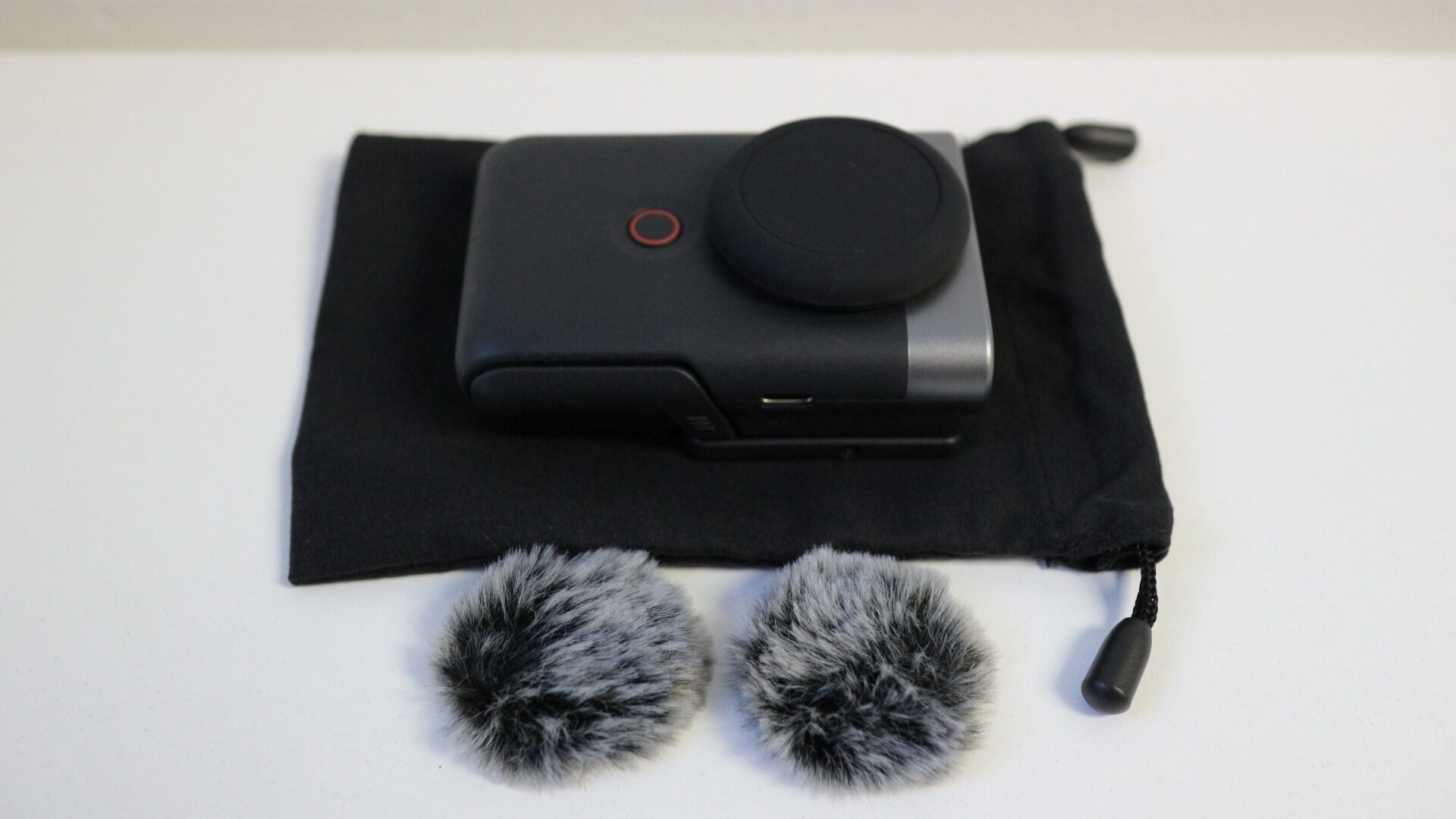A content creator‘s arsenal is in a constant state of flux. There are always mainstays or a core set of tools that are used daily, but improvements and refinements to the hardware one employs to create content is part and parcel of the job.
Cost is also a determining factor, especially for those just starting out.
As such, picking a replacement for something tried and tested is no easy measure, but this is precisely what the Canon PowerShot V10 is trying to do.
When first unveiled last year, Canon billed the PowerShot V10 as a do-it-all vlogging tool to replace the digital camera that many often reach for when looking to record videos to publish online.
So can it replace the point-and-shoot options that many vloggers opt for, or the range of alternatives from the likes of Sony, GoPro, and DJI? We spent the past couple of weeks with the uniquely designed V10 to find out.
Here’s what we found.
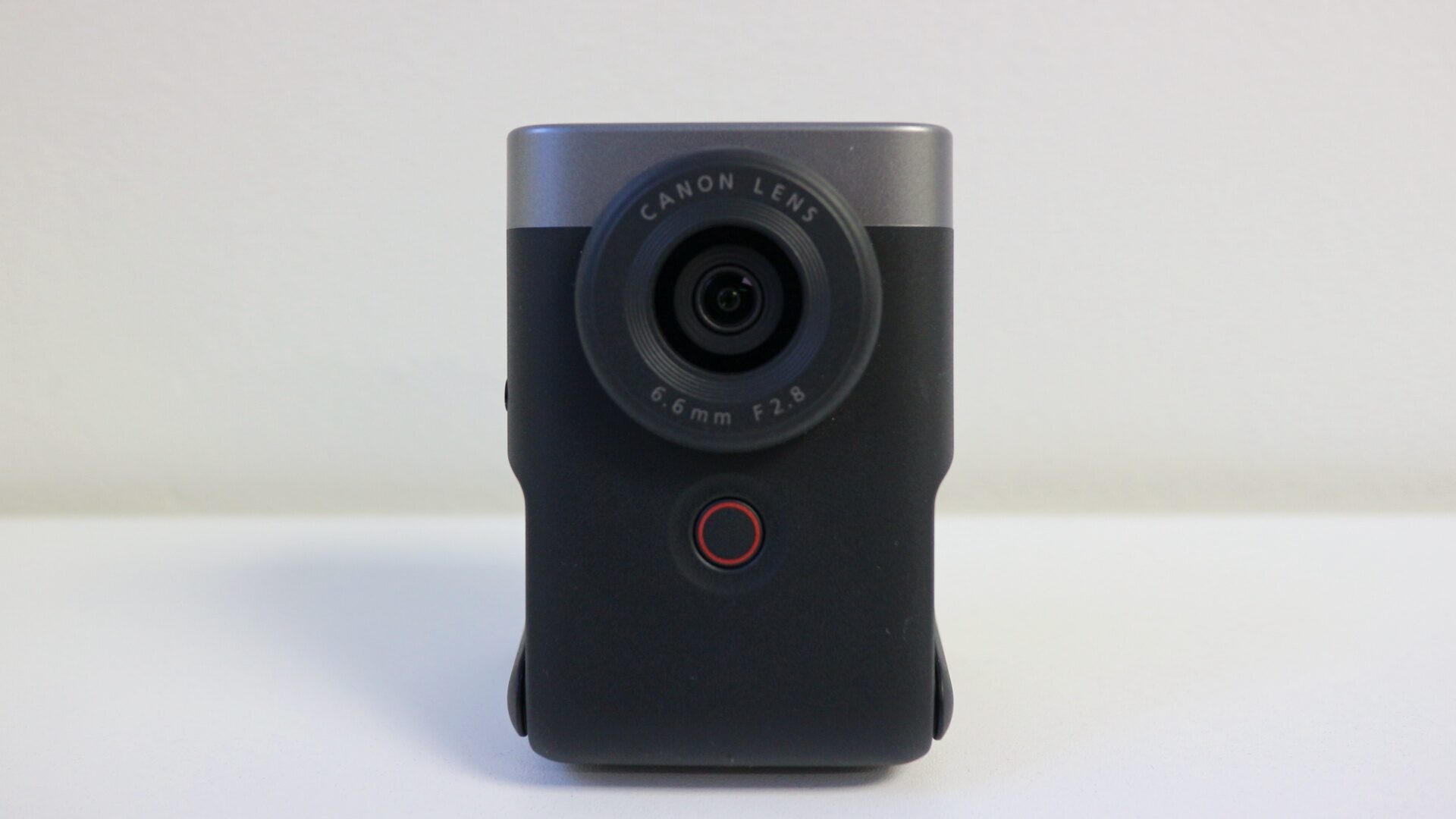
Different form factor
If you’ve ever read one of our hardware reviews, you know where we’re starting – design.
Here the PowerShot V10 is quite peculiar, although it’s nowhere near as odd as the DJI OSMO Pocket. That said, this device could easily be misconstrued as some kind of fancy audio recorder, as its orientation is taller as apposed to wider, which is what many cameras favour these days.
Canon has tried to make its design mirror its function through simplicity. There’s a record button located below the camera lens, a screen on the rear that flips upwards to show you what’s being captured vlog camera style, and a handful of small controls are on the rear.
There’s a companion app too, which we will talk about shortly, but in general after the initial set up where your preferred recording settings are picked, the V10 is very much aimed at hitting record and go.
On this front it works quite well, and the design is fuss free, unlike conventional point and shoot cameras where a cradle, gimbal, or another accessory may be needed when vlogging.
Things are not perfect from a design perspective, however, as little issues start to crop up the more you use this vlogging camera. The pair of stereo microphones located on top of the device do a solid enough job of capturing audio in an acoustically good environment, with the addition of a 3.5mm audio jack for pairing a lapel mic or something equally Bluetooth in nature being a nice touch, but if you plan to be doing a lot of outdoor recording with ambient noise, a furry windshield is a must.
Luckily the PowerShot V10 kit that Canon sells locally has a pair of tiny shields in the box, along with a lens cover, microSD card, and carrying bag.
These work quite nicely, but when you start vlogging and flip the LCD monitor, the shields block off a sizeable portion of the display. It’s not a deal breaking issue, but certainly one we have not experienced previously with this kind of product, and one that may not be suitable for all.
The next element worth talking about is the kick stand, which too is flipped out in order to prop the V10 onto surfaces that may prove a little unstable. The surety here is nice, but the fact that you first have to flip the LCD monitor out before you can do so for the stand seems like a design flaw that will likely be addressed in a future iteration.
You’ll probably be propping up the V10 in this mode for capturing environments in wider angle. Here time lapses immediately come to mind. There is also the added bonus of setting the V10 up as a higher resolution web camera for streaming, video calls, or simply when you want to record a shooting head for your video.
This multi-functionality is not something that all non-conventional vlogging cameras or action cameras can attest to offering. While a GoPro Hero is serviceable as a webcam, the V10 seems far better suited to such a task.


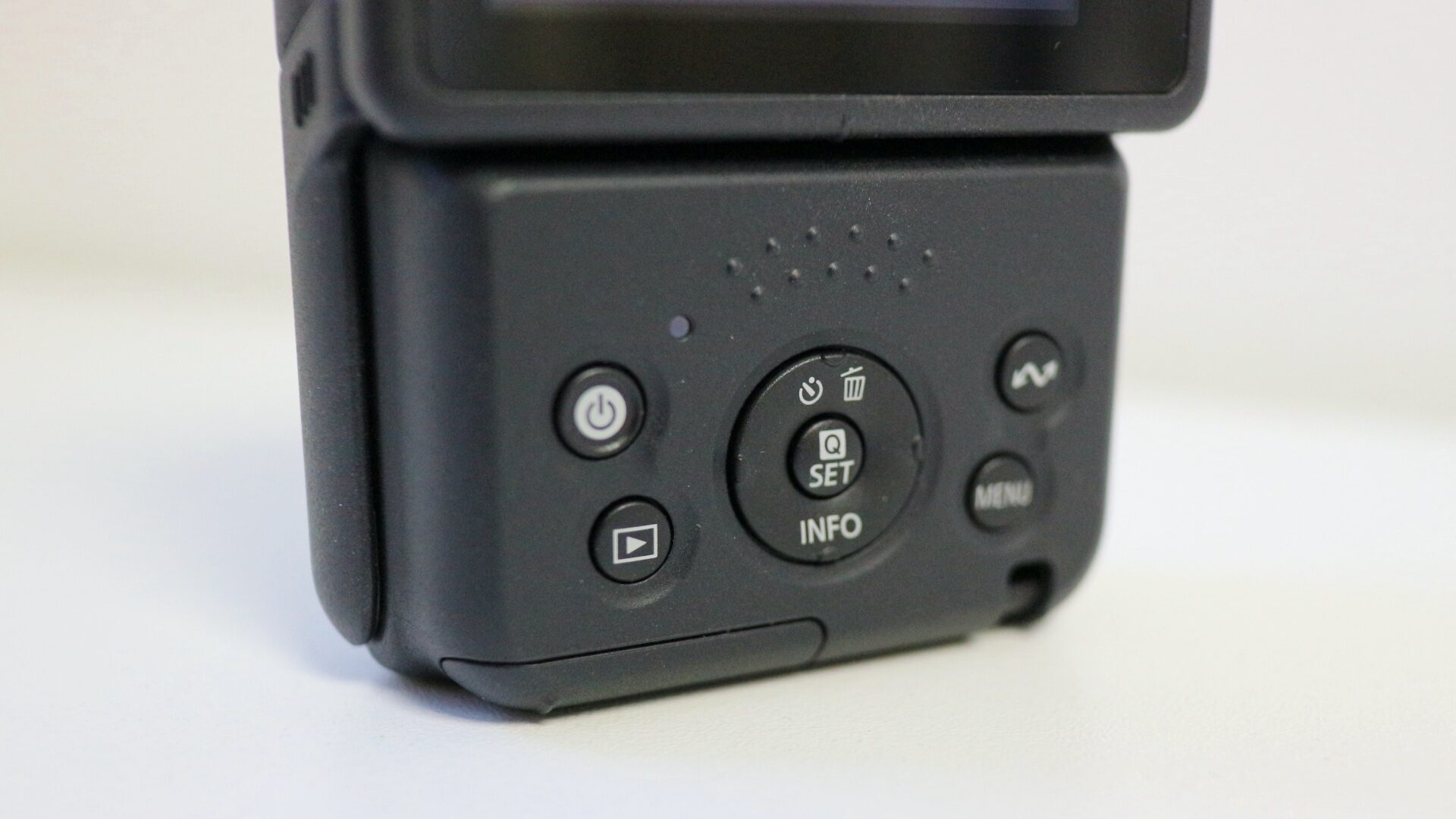
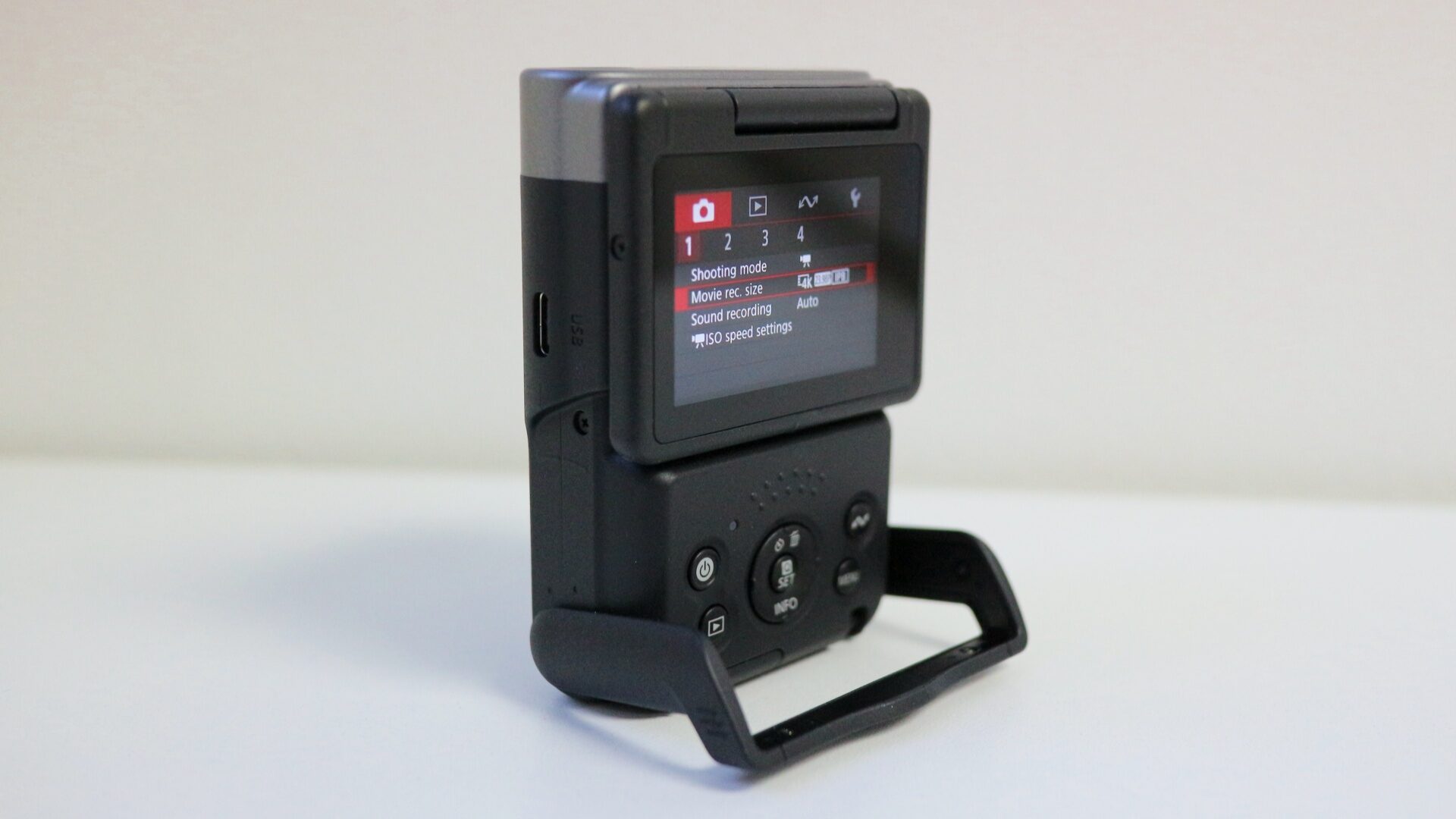
Finding its feet
Now for the actual video recording capabilities and a 1″ 20.9MP CMOS sensor is present here. A 6.6 mm focal length is on offer, with no optical zoom to speak of as three digital zoom settings are present – 1.5x, 2.0x, and 3.0x.
Added to this is an f/2.8 aperture and 97.5 degree field of view when recording in its standard vertical mode with a 16:9 aspect ratio. This increases to 100.2 degrees in horizontal mode, but Canon says this is best for capturing still images (5472×3648 in 3:2), which we tend to agree with.
If the lack of optical zoom is an issue, the maximum video recording is 4K UHD (3840×2160) at 29.97fps, so cropping during editing is an option here. That said, we found the Full HD (1920×1080) at 59.94fps the solid all-around option.
This captured enough detail and nuance for a vlog level video, but the only issue we had was how well it coped with naturally backlit environments, with it yielding a little too much exposure at times. There is an ND mode available to help tackle this, and it’s best to keep this on at all times when recording if you’re wanting as seamless a vlogging experience as possible.
Speaking of which, we need to talk about image stabilisation and steadiness. The V10 features digital only stabilisation which is fine, but if you plan to do a decent amount of walking in your vlogs or simply move around a lot while recording video, this can become an issue.
On this front, the built-in gimbal system in something like the OSMO Pocket 3 might be better serving.
As for battery life, it wavers between 55 minutes to 1 hour and 20 minutes on continuous recording depending on what quality you’re capturing content at. This is about par for the course when you compare the V10 to its rivals in this segment, so here the V10 is neither outgunned, nor separates itself from the pack.
If you do intend to do a lot of vlogging with it, a minimum 20 000mAh power bank is an essential, with a USB Type-C port for charging.
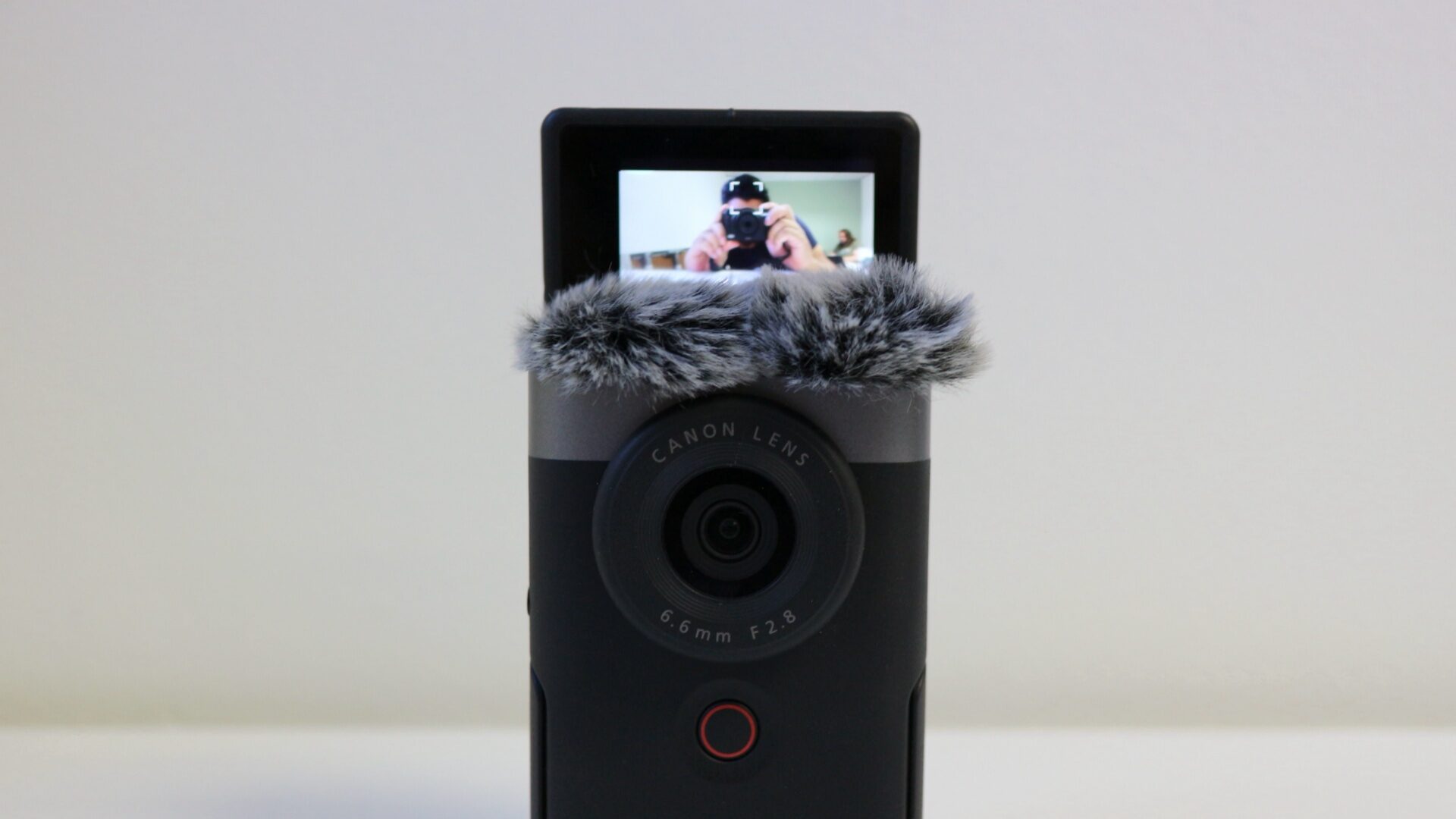


Final verdict
The Canon PowerShot V10 is an intriguing entry into this recent segment of non-traditional vlogging cameras. While there is a lot to like about this offering, including how easy it is to set up on-device and simply start recording, it still feels like a solid first draft in many ways.
The orientation of the microphones for example need to be looked at, as is the lack of any in-body stabilisation, and a lens that is good, but does not distinguish itself in an increasingly crowded market. Added to this is a Canon mobile app that feels date and is far more complicated to use than what GoPro and DJI have available.
While we cannot say that the PowerShot V10 is the perfect replacement for a traditional vlogging camera, at R9 999, it may be worthwhile for seasoned content creators to add to their current setup.
As such, we’ll be interested to see what future iterations of this device will look like, as there is certainly some promise here, it simply has not been realised with this particular model.
FINAL SCORE: 6.5 OUT OF 10.
